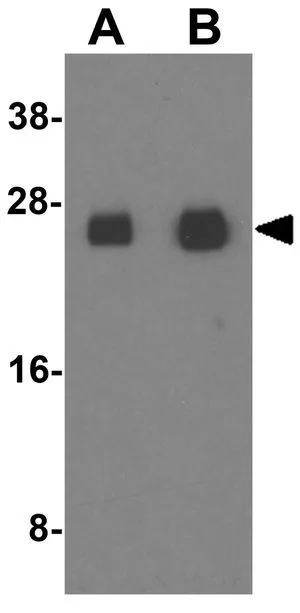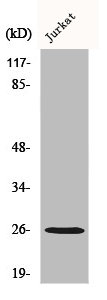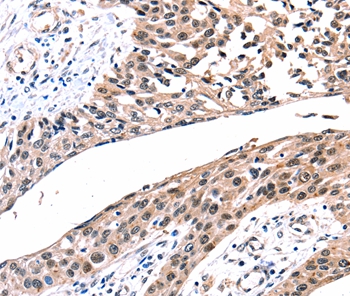
WB analysis of human colon tissue lysate using GTX17229 Connexin 26 antibody. Working concentration : (A) 1 and (B) 2 microg/ml
Connexin 26 antibody
GTX17229
ApplicationsWestern Blot, ELISA
Product group Antibodies
TargetGJB2
Overview
- SupplierGeneTex
- Product NameConnexin 26 antibody
- Delivery Days Customer9
- Application Supplier NoteWB: 1 - 2 microg/mL. *Optimal dilutions/concentrations should be determined by the researcher.Not tested in other applications.
- ApplicationsWestern Blot, ELISA
- CertificationResearch Use Only
- ClonalityPolyclonal
- Concentration1 mg/ml
- ConjugateUnconjugated
- Gene ID2706
- Target nameGJB2
- Target descriptiongap junction protein beta 2
- Target synonymsBAPS, CX26, DFNA3, DFNA3A, DFNB1, DFNB1A, HID, KID, NSRD1, PPK, gap junction beta-2 protein, connexin 26, gap junction beta 2 proteinc, gap junction protein, beta 2, 26kDa, mutant gap junction beta 2 protein, mutant gap junction protein beta 2
- HostRabbit
- IsotypeIgG
- Protein IDP29033
- Protein NameGap junction beta-2 protein
- Scientific DescriptionThis gene encodes a member of the gap junction protein family. The gap junctions were first characterized by electron microscopy as regionally specialized structures on plasma membranes of contacting adherent cells. These structures were shown to consist of cell-to-cell channels that facilitate the transfer of ions and small molecules between cells. The gap junction proteins, also known as connexins, purified from fractions of enriched gap junctions from different tissues differ. According to sequence similarities at the nucleotide and amino acid levels, the gap junction proteins are divided into two categories, alpha and beta. Mutations in this gene are responsible for as much as 50% of pre-lingual, recessive deafness. [provided by RefSeq, Oct 2008]
- Storage Instruction-20°C or -80°C,2°C to 8°C
- UNSPSC12352203






